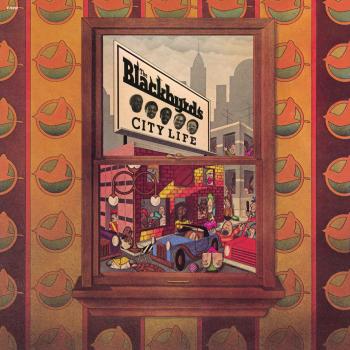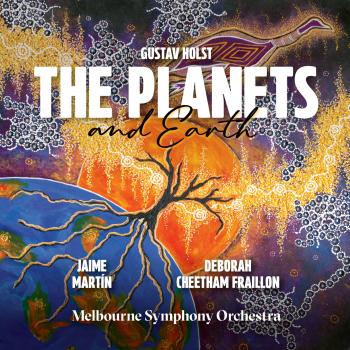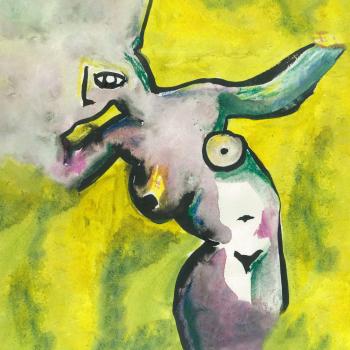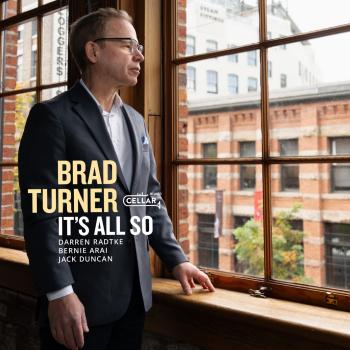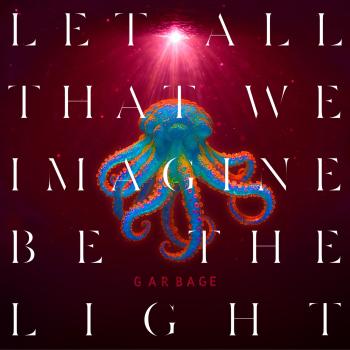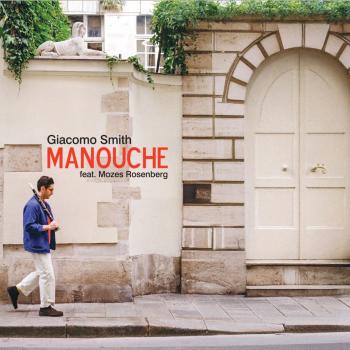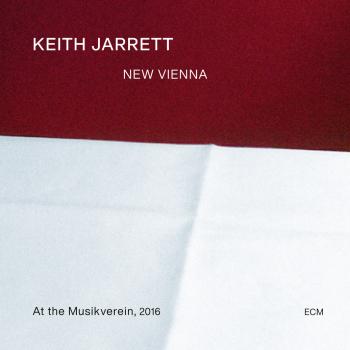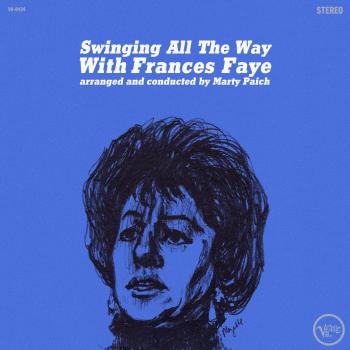
Remain In Light Talking Heads
Album Info
Album Veröffentlichung:
HRA-Veröffentlichung:
15.06.2012
Label: Warner Music Group
Genre: Pop
Subgenre: Adult Contemporary
Interpret: Talking Heads
Komponist: David Byrne, Chris Frantz, Jerry Harrison
Das Album enthält Albumcover
Entschuldigen Sie bitte!
Sehr geehrter HIGHRESAUDIO Besucher,
leider kann das Album zurzeit aufgrund von Länder- und Lizenzbeschränkungen nicht gekauft werden oder uns liegt der offizielle Veröffentlichungstermin für Ihr Land noch nicht vor. Wir aktualisieren unsere Veröffentlichungstermine ein- bis zweimal die Woche. Bitte schauen Sie ab und zu mal wieder rein.
Wir empfehlen Ihnen das Album auf Ihre Merkliste zu setzen.
Wir bedanken uns für Ihr Verständnis und Ihre Geduld.
Ihr, HIGHRESAUDIO
- 1 Born Under Punches [The Heat Goes On] 05:48
- 2 Crosseyed And Painless 04:50
- 3 The Great Curve 06:44
- 4 Once In A Lifetime 04:21
- 5 Houses In Motion 04:30
- 6 Seen And Not Seen 03:23
- 7 Listening Wind 04:50
- 8 The Overload 07:25
Info zu Remain In Light
'Remain In Light' is generally regarded by music critics as being the best Talking Heads album. It was the third album in the Heads/Eno trilogy and was -after 'I Zimbra' on Fear Of Music- their second exploration of African rhythms.
Eno was given sole production credit, and also co-wrote all the songs; originally, only Byrne and Eno were given credits for the music, but before the album was released the rest of the band persuaded the couple to add their names to the credits.
The album featured the new Talking Heads - a multi-personnel band with added percussionists, backing vocalists and guitarist Adrian Belew, who put the wah-wah pedal to its most tasteful use since Jimi Hendrix. The difference was noticeable immediately. Talking Heads songs had always been monologues in the past, but now there were two or three different vocal sections contrasting perspectives on the same issues.
The music was funkier, with more embellishments than before, and 'Remain In Light' represented a completely new approach, rather than an alteration of the old one. The album's most striking track was 'Once In A Lifetime' which - with the help of a dramatically simple and effective video - became the band's first British top 20 single. Talking Heads toured around the world with their extended line-up. In England, the band was supported by U2, then still to win a UK recording contract, as well as O.M.D.
The album's single, 'Once in a Lifetime,' flopped upon release, but over the years became an audience favorite due to a striking video, its inclusion in the band's 1984 concert film Stop Making Sense, and its second single release (in the live version) because of its use in the 1986 movie Down and Out in Beverly Hills, when it became a minor chart entry.
Byrne sounded typically uncomfortable in the verses ('And you may find yourself in a beautiful house, with a beautiful wife / And you may ask yourself -- Well ... how did I get here?'), which were undercut by the reassuring chorus ('Letting the days go by'). Even without a single, Remain in Light was a hit, indicating that Talking Heads were connecting with an audience ready to follow their musical evolution, and the album was so inventive and influential, it was no wonder. As it turned out, however, it marked the end of one aspect of the group's development and their last new music for three years.
'David Byrne said that Remain in Light 'was done in bits and pieces, one instrument at a time.' The result was a New Wave masterpiece powered by contradiction, the combined thrust of a P-Funk dance party, the ancient-to-the-future rhythm hypnosis of Nigerian funkmaster Fela Kuti and the studied adventurousness of the album's producer and Heads co-conspirator, Brian Eno. Remain in Light marked Talking Heads' transformation from avatars of the punk avant-garde to polyrhythmic magicians with hit-single appeal. Just try not dancing to 'Once in a Lifetime.' (www.rollingstone.com)
David Byrne, vocals, bass, Guitar, keyboards
Chris Frantz, drums, keyboards, percussion
Jerry Harrison, bass, guitar, keyboards
Guest artists:
Adrian Belew, guitar
Brian Eno, guitar, bass, keyboards
Jon Hassell, horn, trumpet
Nona Hendryx, vocals
Robert Palmer, percussion
Jose Rossy, percussion
Tina Weymouth, bass, keyboards, percussion
Produced by Brian Eno
Digitally remastered 2011.
Recorded at Compass Point Studios, Nassau, The Bahamas.
Vocals and additional tracks recorded at Sigma Sound, New York City and Eldorado Studios, Los Angeles.
Mastered at Sterling Sound.
Rolling Stone 500 Greatest Albums of All Time - Rated 129/500!
Digitally remastered
At the start of their career, Talking Heads were all nervous energy, detached emotion, and subdued minimalism. When they released their last album about 12 years later, the band had recorded everything from art-funk to polyrhythmic worldbeat explorations and simple, melodic guitar pop. Between their first album in 1977 and their last in 1988, Talking Heads became one of the most critically acclaimed bands of the '80s, while managing to earn several pop hits. While some of their music can seem too self-consciously experimental, clever, and intellectual for its own good, at their best Talking Heads represent everything good about art-school punks.
And they were literally art-school punks. Guitarist/vocalist David Byrne, drummer Chris Frantz, and bassist Tina Weymouth met at the Rhode Island School of Design in the early '70s; they decided to move to New York in 1974 to concentrate on making music. The next year, the band won a spot opening for the Ramones at the seminal New York punk club CBGB. In 1976, keyboardist Jerry Harrison, a former member of Jonathan Richman's Modern Lovers, was added to the lineup. By 1977, the band had signed to Sire Records and released its first album, Talking Heads: 77. It received a considerable amount of acclaim for its stripped-down rock & roll, particularly Byrne's geeky, overly intellectual lyrics and uncomfortable, jerky vocals.
For their next album, 1978's More Songs About Buildings and Food, the band worked with producer Brian Eno, recording a set of carefully constructed, arty pop songs, distinguished by extensive experimenting with combined acoustic and electronic instruments, as well as touches of surprisingly credible funk. On their next album, the Eno-produced Fear of Music, Talking Heads began to rely heavily on their rhythm section, adding flourishes of African-styled polyrhythms. This approach came to a full fruition with 1980's Remain in Light, which was again produced by Eno. Talking Heads added several sidemen, including a horn section, leaving them free to explore their dense amalgam of African percussion, funk bass and keyboards, pop songs, and electronics.
After a long tour, the band concentrated on solo projects for a couple of years. By the time of 1983's Speaking in Tongues, the band had severed its ties with Eno; the result was an album that still relied on the rhythmic innovations of Remain in Light, except within a more rigid pop-song structure. After its release, Talking Heads embarked on another extensive tour, which was captured on the Jonathan Demme-directed concert film Stop Making Sense. After releasing the straightforward pop album Little Creatures in 1985, Byrne directed his first movie, True Stories, the following year; the band's next album featured songs from the film. Two years later, Talking Heads released Naked, which marked a return to their worldbeat explorations, although it sometimes suffered from Byrne's lyrical pretensions.
After its release, Talking Heads were put on 'hiatus'; Byrne pursued some solo projects, as did Harrison, and Frantz and Weymouth continued with their side project, Tom Tom Club. In 1991, the band issued an announcement that they had broken up. Shortly thereafter, Harrison's production took off with successful albums by Live and Crash Test Dummies. In 1996, the original lineup minus Byrne reunited for the album No Talking Just Head; Byrne sued Frantz, Weymouth, and Harrison for attempting to record and perform as Talking Heads, so the trio went by the Heads. In 1999, all four worked together to promote a 15th-anniversary edition of Stop Making Sense, and they also performed at the 2002 induction ceremony for their entrance into the Rock and Roll Hall of Fame. Through the 2010s, Byrne released a number of solo and collaborative projects. Tom Tom Club continued to tour, while Harrison produced albums for the likes of No Doubt, the Von Bondies, and Hockey. (Stephen Thomas Erlewine, All Music)
Dieses Album enthält kein Booklet

